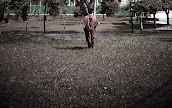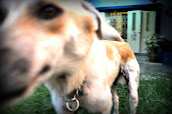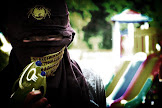The over-emphasis on wearing face masks is giving people a false sense of safety. Most people think that wearing face masks will prevent H1N1 virus from infecting them and the constant reminder of the government reinforces this thinking. The truth is that face masks do not effectively prevent anyone from getting infected by H1N1 because H1N1 is not an airborne virus.
Taken from a website - [...to be considered an airborne virus, the microorganism would have to survive or remain in the air for long periods of time. The H1N1 virus, like all influenza viruses do not stay in the air in some sort of suspended animation. When a person sneezes, the virus is transferred via the droplets of the sneeze, if someone is infected this way it is known as infection by "Droplet contact" or a "Respiratory Route".]
Taken from Wikipedia - [Influenza spreads between humans through coughing or sneezing and people touching something with the virus on it and then touching their own nose or mouth...
Recommendations to prevent spread of the virus among humans include using standard infection control against influenza. This includes frequent washing of hands with soap and water or with alcohol-based hand sanitizers, especially after being out in public. Chance of transmission is also reduced by disinfecting household surfaces, which can be done effectively with a diluted chlorine bleach solution.]
Read also this article from the Centers for Disease Control and Prevention (CDC) in the US - http://www.cdc.gov/h1n1flu/qa.htm. CDC does not mention prevention using face masks at all in the article.
Face masks prevent those people who have cough or cold from spewing saliva and/or mucus onto surfaces when they cough or sneeze. Whoever touches the contaminated surfaces will then get infected by the virus. Anyone not wearing face masks should cough or sneeze into a tissue and dispose it properly into the trash bin after use.
Many people tend to cough or sneeze into their hands and when they touch a handrail or door knob, the virus is transferred onto these surfaces. Because they do not know that the H1N1 virus transmits via surface contamination, they do not take preventive measures to avoid spreading the virus.
For someone to get infected directly, the infected person must literally cough or sneeze into his face. In this scenario, wearing a face mask will reduce the chance of getting infected while the virus is still suspended in the air in that very short time and has not dropped onto the surface. But people don't cough or sneeze into someone else's face.
To avoid being infected by H1N1 or any other flu virus, avoid touching surfaces in public areas such as handrails, etc. Avoid touching our noses or mouths with our hands until after washing our hands. Almost all of those who died of H1N1 had pneumonia or lungs failure. The most direct route of infection is via our noses and mouths.
I have seen many people at train and bus stations wearing face masks who pull down their face masks to rub their noses and touch their mouths. If their hands had been contaminated by the H1N1 virus then they would have been infected, despite wearing face masks.
After touching any surfaces, quickly wash hands with soap or sanitizer. Surfaces must be wiped clean as often as possible with a mild chlorine-based cleanser. How often do we see anyone wiping escalator handrails, elevator control panels or table tops? All everyone talk about is face masks when cleaning surfaces is more important and effective to kill the virus.
The public has not been informed about surface contamination and infection by the Ministry of Health, only to wear face masks and to wash hands properly. This is a gross irresponsibility on their part and a factor and reason why H1N1 continue to spread in Malaysia.
skip to main |
skip to sidebar



About Me
- tRavis
- Hello Readers and Friends, He's originally Loh Jin Meng and now welly known as Travis Loh! Just hop into the new era of 21 years old haha! God, Family and Friends are his Life... He enjoys Designing, Film making, and Art!
Affiliation

Entertaining Sites
-
-
-
The ABCs of Dating6 years ago

Labels
Talk it OUT!!!
Blogs I read sometimes?
-
Fran & Pocky Addictions NEW!15 years ago
-
-
Ungirded10 years ago
-
Patriotism13 years ago
-
至青春10 years ago
-
-
-
-
One Million Lit19 years ago
-
-
twentyeleven14 years ago
-
-
-
zero9 years ago
-
ASSIGNMENTS!15 years ago
-
2011 in Brief14 years ago
-
-
-
a year journey comes to the end11 years ago
-
Blog Archive
-
▼
2009
(101)
-
▼
August
(13)
- Misconception on face masks against H1N1 infection
- Suicidal Action in My Room
- A New Family to Travis's Site : PhotoBlog
- H1N1- Unpublicized preventative steps (Personal)
- Stopmotion Video Project
- Something I had been working on
- Edward's Convo @ UPM
- He ain't that young at all
- H1N1(it's getting serious) - Everything You Need t...
- Should i call them Noise? or Tune? hahahah !
- HDD Downed Again
- Memories of "Gundam" and "Shopping"
- Drive Safe
-
▼
August
(13)



























0 comments:
Post a Comment